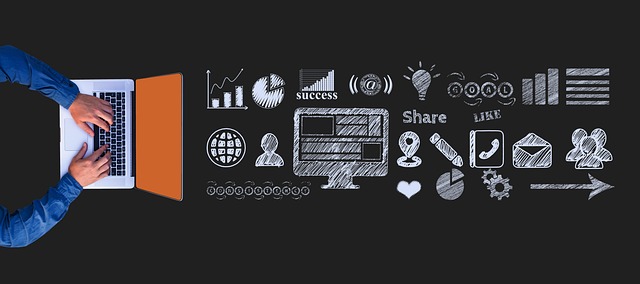AI-driven data visualization is transforming the restaurant sector by offering intuitive, visual insights into complex operations and customer behavior. AI data analytics tools for restaurant trends uncover hidden patterns in vast datasets, providing crucial knowledge about customer preferences, menu performance, and peak dining times. By leveraging these insights, restaurateurs can make strategic decisions to optimize menus, enhance satisfaction, and streamline operations. These advanced tools process diverse data sources like sales, social media, and feedback, offering real-time insights into dining habits, popular items, and trends. AI algorithms predict demand, connect menu items with demographics, and enable targeted promotions, keeping restaurants competitive in a dynamic market.
In today’s competitive culinary landscape, understanding customer preferences is crucial for restaurants’ success. This is where AI-powered data visualization steps in as a game-changer. By leveraging advanced algorithms, these tools transform raw data into insightful trends, helping restauranteurs make informed decisions. From identifying popular menu items to uncovering seasonal fluctuations, AI data analytics tools offer a vibrant tapestry of information. This article explores the benefits and provides a step-by-step guide to implementing AI data analytics tools for restaurant trend analysis.
- Understanding AI-Powered Data Visualization for Restaurants
- Benefits of Using AI in Restaurant Trend Analysis
- Implementing AI Data Analytics Tools: A Step-by-Step Guide
Understanding AI-Powered Data Visualization for Restaurants

AI-powered data visualization is transforming the way restaurants understand and leverage their data, offering a powerful edge in today’s competitive culinary landscape. These advanced tools go beyond traditional analytics by presenting complex restaurant operations and customer behavior insights in intuitive, visual formats. By harnessing AI algorithms, these platforms can identify trends, patterns, and correlations within vast datasets that may otherwise remain hidden.
For restaurants, this means gaining valuable knowledge about customer preferences, menu performance, peak dining times, and more. For instance, AI data analytics tools can reveal popular dishes or ingredients, helping restaurants optimize their menus to maximize sales and customer satisfaction. Visual representations of these insights allow stakeholders to quickly grasp key metrics, facilitating faster decision-making processes and strategic planning for efficient operations and marketing strategies.
Benefits of Using AI in Restaurant Trend Analysis

Using AI data analytics tools for restaurant trends offers a myriad of benefits that can transform the way restaurateurs understand and cater to their customers. These advanced tools are able to process vast amounts of data from various sources, such as sales transactions, social media mentions, and customer feedback, providing insights into dining habits, popular menu items, and emerging trends in real-time. This level of granularity allows restaurant owners to make data-driven decisions about menu optimization, pricing strategies, and marketing campaigns.
Moreover, AI algorithms can identify patterns and correlations that might not be immediately apparent to human analysts. By uncovering these hidden insights, businesses can stay ahead of the curve in a highly competitive market. For example, an AI system could predict when certain seasonal ingredients will be in peak demand or identify connections between specific menu items and customer demographics, enabling more targeted promotions and enhancing overall dining experiences.
Implementing AI Data Analytics Tools: A Step-by-Step Guide

Implementing AI data analytics tools in the restaurant industry can provide valuable insights into customer behavior and market trends, enabling businesses to make informed decisions. The first step is to identify specific areas where AI can offer solutions, such as predictive analytics for inventory management or sentiment analysis of customer reviews to gauge satisfaction levels. Next, choose suitable AI data analytics tools tailored to restaurant needs; platforms like Google Cloud AI, IBM Watson Analytics, or specialized restaurant analytics software are excellent options.
Once selected, integrate these tools with your existing systems, ensuring seamless data flow. Train the models using historical data, focusing on patterns related to sales, staffing, and customer preferences. Regularly update and refine the models as new data becomes available. This iterative process allows for accurate predictions and insights, helping restaurants optimize their operations, enhance customer experiences, and stay competitive in a dynamic market.
AI-powered data visualization is transforming the way restaurants understand and leverage customer behavior, ultimately enhancing their operations. By employing AI data analytics tools for restaurant trends, businesses can gain valuable insights into customer preferences, peak hours, and menu performance, enabling data-driven decisions that foster growth and profitability. With these AI business tools, navigating the complex landscape of restaurant analytics becomes more accessible, ensuring folks in the industry can stay ahead of the curve and offer a vibrant dining experience.
